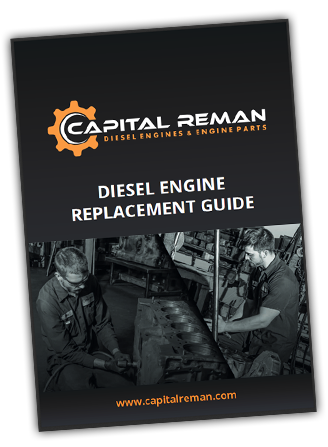Diesel engines—those gutsy, clattering powerhouses—are the unsung heroes of the transportation and heavy machinery sector. They're the muscular workhorses that pull seemingly insurmountable loads and never back down from a challenge. Yet, every engine has its Achilles' heel, its weak point. For diesel engines, that Achilles might very well be the rollers and cams, components tasked with the vital choreography of valve movements. In this deep-dive post, we're shedding light on what exactly causes such crucial parts to stutter and fail.
Power Play
Before we roll up our sleeves and dig into the grime, it's essential to truly understand the role these components play in a diesel's operation. In the high-stakes ordeal of a compression-ignition engine, the camshaft and its rollers are the conductors, ensuring that valves open and close at the precise time. They're designed to last, yes, but even the sturdiest warriors have their breaking points.
Worn Pins and Misalignment Mechanisms: A Faulty Rudder
Is there such a thing as being too well-tempered? Both the camshaft and the rollers are designed with one being harder than the other for a reason. Yet, if they aren't turning as they should—be it due to mis adjustment, wear and tear, or a lack of lubrication—they begin the treacherous, repetitive dance of chatter and abrasion against each other. These aren't parts that do well with a lot of friction. Consistency is their game, and when the beat is off, it doesn't take long for the engine to dissolve into noise.
Interference in Lubrication: Sand in the Gears
Lack of proper lubrication due to any number of culprits most often times leads to failures—be it a defective oil pump, dirty oil, or a clog in the arteries (the oil paths lining the engine)—spells trouble, and a gradual or even sudden wearing down of vital parts.
The Camshaft Misfire or a Bad Overhead Setting: A Cylinder Off
If the valves unexpectedly launch off their correct position above, your camshaft is in for a turbulent ride. This disparity in timing is not only a one-way ticket to power loss but a habit-forming one that results in distressing wear patterns on the camshaft.
Saving a Diesel
Preventive maintenance is the name of the game—a game that, when not adhered to, usually ends with a white flag of surrender from your engine's components. To save your rollers, cam and other parts from premature wear or damage, regular inspections, cleanliness, and good lubrication are essential.
Regular Inspections: The Check-Up Is Not Merely a Suggestion, It's a Law of the Land
Preventative maintenance and inspection is essential in keeping your engine running. Catching a problem before it grows insurmountable is the goal. With the rollers and cams, it's often a matter of careful inspection or paying attention to odd noises to detect any small issues that could become large problems.Parts Fail and Wear Out
It's not always due to negligence when parts fail. Parts can simply wear out over time with normal wear and tear. Even with the best maintenance programs can’t prevent failures or damage. Sometimes, it's just the nature of the job; sometimes, it's an unavoidable conclusion. But what remains within your control is the dedication to the service that helps these parts last.
Conclusion
The longevity of a diesel engine is a constant tug-of-war between use and natural wear and tear and regular maintenance. Rollers and cams are not mere parts; they are crucial to the diesel engine's performance. And though they will eventually wear out, their effectiveness and longevity depend largely on the understanding and care we put into them. For the fleet manager, or over-the-road trucker, this is not just a mechanical tale—it's a principle that needs to be adhered to for longevity.





